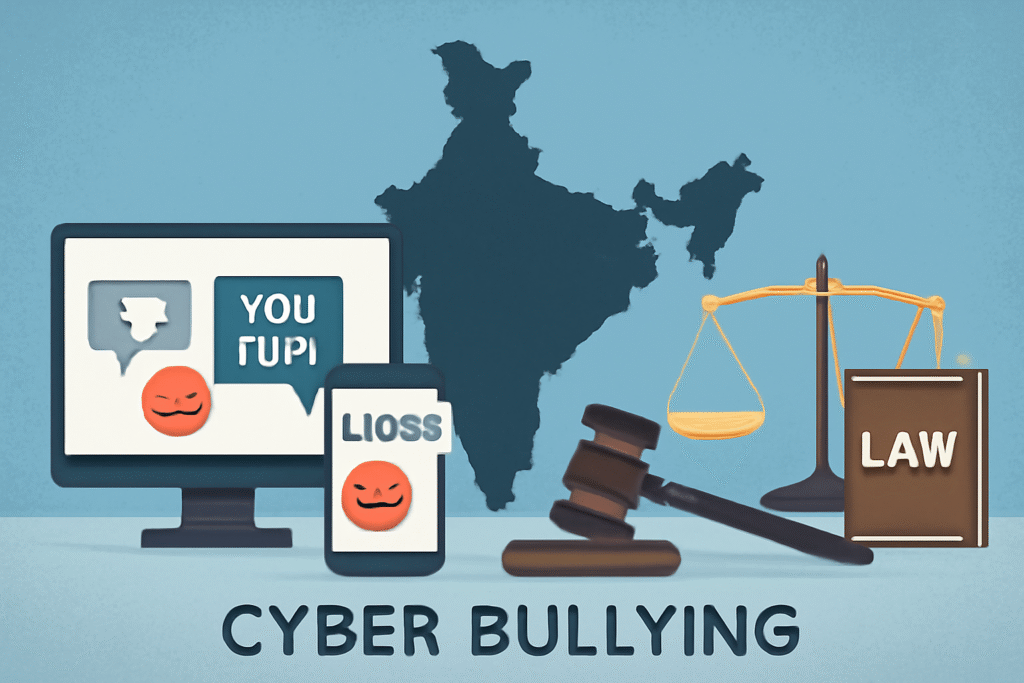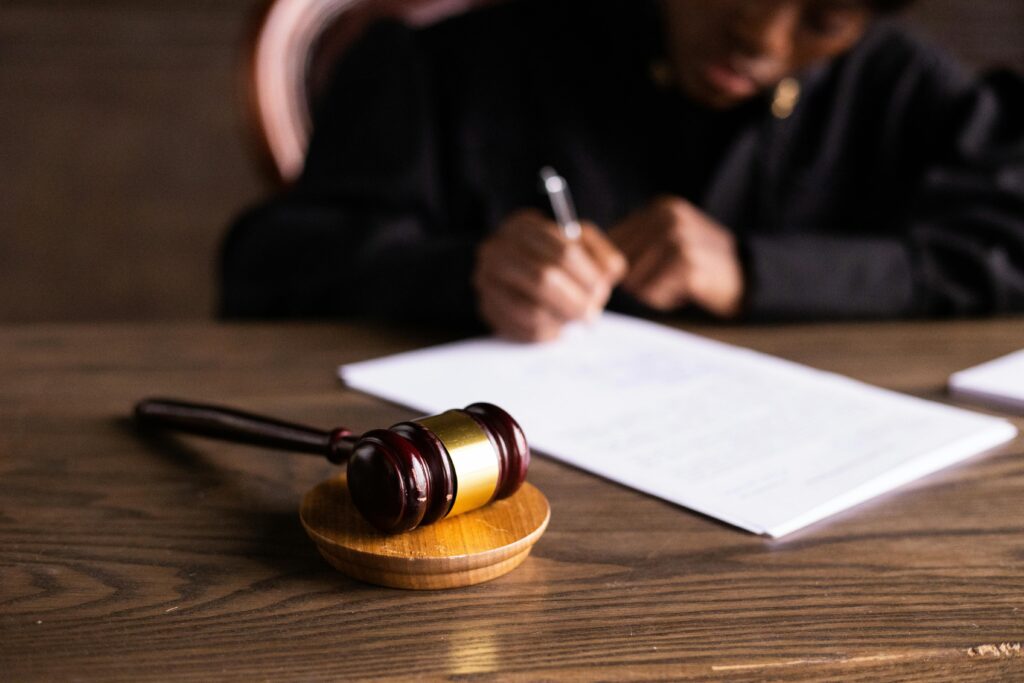Published On: October 12th 2025
Authored By: Livinasree S
School of Excellence in Law,
The Tamilnadu Dr Ambedkar Law University, Chennai
INTRODUCTION
Transgender individuals have long been a part of society, yet they remain among the most vulnerable and marginalised groups. They often face severe forms of discrimination, violence, and abuse, simply because their gender identity does not align with the gender assigned to them at birth. Many transgender persons are physically assaulted, sexually abused, and denied fundamental human rights. Discrimination occurs in various forms, from being denied education and employment opportunities to facing harassment in public spaces and healthcare institutions[1].
The Transgender Persons (Protection of Rights) Act, 2019, marked a significant legal milestone in India. According to Section 2(k) of the Act, a “transgender person” is defined as someone whose gender identity does not match the sex assigned at birth. This includes trans-men, trans-women (regardless of any medical procedures like sex reassignment surgery or hormone therapy), individuals with intersex variations, genderqueer persons, and those with recognized socio-cultural identities such as Kinner, Hijra, Aravani, and Jogta[2].
Historically, transgender people have existed for centuries. Ancient Indian texts such as the Ramayana and Mahabharata reference individuals who could be considered transgender by modern understanding. In classical Sanskrit, the term Napunsak ling was used to describe non-binary gender identities. During the Mughal period, transgender persons, especially Hijras, held important roles in royal courts and were respected members of society, often tasked with guarding the inner chambers of palaces.
However, under British colonial rule, their status deteriorated drastically. The Criminal Tribes Act of 1871 labelled them as inherently criminal, reinforcing harmful stereotypes that persisted even after India’s independence. Although the Act was repealed post-independence, transgender individuals continued to be marginalized and ignored in policy and law. It was only in 2014 that the Supreme Court of India officially recognized transgender persons as a third gender, affirming their fundamental rights and dignity, and marking the beginning of a new era for their inclusion and protection.
LEGAL RECOGNITION OF TRANSGENDER PERSON
The legal recognition and protection of transgender individuals in India have undergone a remarkable transformation over the last two decades, marked by a series of landmark judicial decisions and legislative enactments. Among these, the case of National Legal Services Authority (NALSA) v. Union of India (2014)[3] stands as a pivotal moment in the history of transgender rights in the country. In this landmark judgment, the Supreme Court of India recognized transgender individuals as the “third gender” and confirmed that they are entitled to all fundamental rights guaranteed under the Constitution of India. The Court emphasized that transgender individuals have the right to self-identify their gender as male, female, or third gender, and that this right is central to their autonomy, dignity, and personal freedom.
The Court went further to assert that transgender people are human beings first and foremost, and as such, are protected by Articles 14 (Right to Equality), 15 (Prohibition of Discrimination), 19 (Freedom of Speech and Expression), and 21 (Right to Life and Personal Liberty). The ruling also aligned with international human rights principles, particularly the Universal Declaration of Human Rights (1948), which affirms the inherent dignity and equal rights of all human beings, regardless of their gender identity or expression. This decision brought new hope to a community that had long been subjected to systemic discrimination, violence, and social exclusion.
However, the transgender community’s challenges were compounded by Section 377 of the Indian Penal Code, which criminalized “carnal intercourse against the order of nature.” This law was historically used to harass and punish individuals in same-sex relationships, including transgender persons. In NAZ Foundation v. Government of NCT of Delhi (2009)[4], the Delhi High Court ruled that consensual homosexual acts between adults in private did not amount to a criminal offense, stating that Section 377 violated fundamental rights such as the right to privacy, dignity, and equality. This was a progressive judgment that marked a turning point in LGBTQ+ legal advocacy in India.
However, this victory was short-lived. In Suresh Kumar Koushal and Another v. NAZ Foundation and Others[5]A two-judge bench of the Supreme Court overturned the Delhi High Court’s decision, declaring that Section 377 was constitutional and must remain in effect. The ruling argued that the LGBTQ+ population constituted a “minuscule fraction” of society and, therefore, did not warrant constitutional protection under Article 21. This decision was widely criticized for its regressive outlook and failure to uphold human dignity.
The tide finally turned in Navtej Singh Johar v. Union of India[6], where a five-judge Constitution Bench of the Supreme Court unanimously ruled that Section 377 was unconstitutional insofar as it criminalized consensual sexual conduct between adults of the same sex. This historic judgment reinforced the rights of LGBTQ+ individuals, affirming their right to love, dignity, privacy, and equality. However, the law still applies to cases involving non-consensual acts and minors, which remain criminal offenses. Following these judicial milestones, the Parliament of India enacted the Transgender Persons (Protection of Rights) Act, 2019, to codify the rights of transgender individuals into law. The Act provides a comprehensive legal framework aimed at protecting the dignity and rights of transgender persons and facilitating their social inclusion. Under Section 2(k) of the Act, a transgender person is defined as someone whose gender identity does not match the sex assigned at birth. This includes trans-men, trans-women, intersex individuals, genderqueer persons, and those with traditional socio-cultural identities such as Hijras, Kinners, Aravanis, and Jogtas.
Section 3 of the Act explicitly prohibits discrimination against transgender persons in various domains, including employment, education, healthcare, housing, access to public services, and the use of public spaces. Section 4 acknowledges the right of every transgender person to self-perceived gender identity, irrespective of any medical or physical procedure such as surgery or hormone therapy. One of the key provisions of the Act is Section 18, which outlines punitive measures against individuals or institutions that commit acts of violence, abuse, or discrimination against transgender persons. Under this section, any person who:
- Compels a transgender person into bonded or forced labour,
- Forces a transgender person to leave their home or place of residence,
- Inflicts physical, sexual, verbal, emotional, or economic abuse, or
- Denies them access to public spaces or services
can be punished with imprisonment ranging from six months to two years, along with a fine. This provision aims to ensure accountability and legal recourse for the injustices frequently faced by the transgender community[7].
The Act also mandates that the government take proactive steps to secure the welfare of transgender persons. This includes setting up welfare boards, establishing rehabilitation centres, facilitating access to education and healthcare, and launching awareness campaigns to reduce stigma and promote inclusion. Despite these legal and legislative advancements, many challenges persist. Social stigma, economic marginalization, and lack of awareness continue to affect the lives of transgender individuals across India. Many still face rejection by families, unemployment, poor access to healthcare, and frequent violence or harassment. The implementation of the Transgender Persons Act has also faced criticism, particularly regarding bureaucratic hurdles in the process of legal gender recognition and inadequate representation of the transgender community in policy formulation.
While the legal framework has begun to shift in favour of equality, much more needs to be done. Greater efforts are needed from governmental bodies, civil society, educational institutions, and the private sector to create an inclusive environment where transgender individuals are not just protected by law, but are accepted, respected, and celebrated in society. The journey toward full equality for transgender persons is ongoing, and it requires a collective commitment to human dignity, social justice, and constitutional values.
TRANSGENDER PERSONS (PROTECTION OF RIGHTS) ACT, 2019
The 2019 Act permits a transgender individual to be acknowledged as such and provides for a self-identified gender identity. The provisions also address the issuance of an identity certificate and the issuance of a certificate indicating a gender change. A transgender individual may apply to the District Magistrate for an identity certificate, designating their gender as ‘transgender’. A revised certificate can only be obtained if the individual has surgery to alter their gender to either male or female. Under this Act, the Central Government is tasked with ensuring the following rights for the transgender community[8].
Prohibition against Discrimination: This Act forbids discrimination against a transgender individual, including service denial or unfair treatment about (i) education; (ii) employment; (iii) healthcare; (iv) access to, or enjoyment of goods, facilities, and opportunities available to the public; (v) right to movement; (vi) right to reside, rent, or otherwise occupy property; (vii) opportunity to hold public or private office; and (viii) access to a government or private establishment in which a transgender individual is in care or custody[9].
OFFENCES AND PENALTIES
The Act acknowledges the following offences against transgender persons: (i) forced or bonded labour (excluding compulsory government service for public purposes), (ii) denial of access to public places, (iii) removal from the household and village, (iv) physical, sexual, verbal, emotional, or economic abuse. Penalties for these offences range from six months to two years, along with a fine.
TRANSGENDER REPRESENTATION IN LEGAL EDUCATION
Kanmani Ray, an attorney, addressed “Transgender Persons’ Access to Legal Education ” Kanmani concentrated on the experiences of transgender individuals within legal education. She commenced by sharing her experiences at Delhi University, where she pursued law. She noted that numerous transgender individuals held law degrees but frequently dropped out or refrained from practicing law, and also indicated that trans students in professional programs often resort to enrolling in distance learning courses due to the painful experience of attending full-time classes. They face harassment, ridicule, and bullying for their gender self-expression. Universities do not tackle these problems, and she mentioned how the Dean of her faculty claimed that there were no trans students in the law faculty. Kanmani referenced a study regarding the level of trans-inclusivity across NLUs, which exhibited how non-inclusive most national law universities were. She stressed that if law universities fail to implement the Transgender Persons (Protection of Rights) Act 2019, other educational institutions cannot be expected to be trans-inclusive. Kanmani also identified reasons for the absence of trans-representation in the legal field, including the lack of transgender faculty, lack of gender-neutral restrooms on campuses and in courts. There are no concessions or reservations for transgender individuals when gaining admission to law schools. All these factors contribute to the further marginalisation within the legal profession. Kanmani concluded by stressing the necessity for institutional reform in the legal profession[10].
Randhoni Lairikyengbam from SAATHII spoke about “Advocacy for Trans-Inclusive Education.” Randhoni detailed her work with SAATHII, civil society organisations, and community partners in the educational sector[11]. She mentioned that the NALSA ruling has remained unimplemented in various states even after the enactment of the Transgender Persons (Protection of Rights) Act 2019. Her efforts include raising awareness among stakeholders and educating teachers and students about trans-inclusivity in education, where they address issues encountered by gender non-conforming students, infrastructural concerns, and bullying and harassment experienced by students. Training is also conducted on existing laws and rulings and on how they can be more effectively applied in practice. They also organise training sessions for NCERT master trainers. As a result of these initiatives, several institutions have reaffirmed their UGC anti-ragging regulations. The challenges they encounter consist of the slow pace of changing attitudes and the difficulty of translating policies and advisories into tangible actions. The execution of the policy is often hindered by the transfer of officials, systemic inaction and sluggishness, and slow governmental approvals.
All of these presentations underscore the urgent and tangible need for trans-inclusivity in education at all levels, encompassing primary, middle school, higher education, and professional education. It should not only be trans-inclusive but also accessible and equitable to other intersectionalities of Adivasi and caste, disability, and other minorities.
Initiatives of the Government of India for Transgender Education:
- National Education Policy 2020
- National portal for transgender persons
- SMILE
- PM-DAKSH
- Garima Greh
- Centrally-sponsored Scheme of Pre-Matric Scholarship & Post-Matric Scholarship for Transgender Students[12]
Several progressive judicial interventions in India have significantly advanced the inclusion of transgender individuals, particularly in education and public policy. In Dr. Trinetra Haldar Gumaraju v. State of Karnataka[13]The Karnataka High Court ordered the provision of separate accommodation for transgender students in higher educational institutions to promote a safe and inclusive environment. Similarly, in Swapna v. Chief Secretary[14]The Madras High Court directed the Tamil Nadu government to formulate a reservation scheme for the transgender community within six months. Furthering affirmative action, the Tamil Nadu Backwards Classes Commission was instructed to issue Most Backwards Class (MBC) certificates to transgender individuals, ensuring their eligibility for social and educational benefits.
In another landmark case, Sushma v. Commissioner of Police[15]The Madras High Court issued a series of progressive guidelines, including the establishment of gender-neutral restrooms, facilitation of name and gender changes in official records, and sensitization programs for police and administrative authorities to address LGBTQIA+ concerns. These rulings mark significant steps toward institutional inclusion and recognition of transgender rights in India.
While exact figures on the precise number of transgender law graduates in India are unavailable, many individuals have achieved significant milestones in the legal field, challenging obstacles and creating opportunities for enhanced inclusion. Padma Lakshmi made history as the first transgender individual to be registered as a lawyer in Kerala, after completing her studies at Ernakulam Government Law College[16]. In a similar vein, Sathyasri Sharmila is well-known as India’s first transgender lawyer, making waves through her participation in the legal arena and inspiring others from the transgender community to follow paths in law[17].
The Supreme Court of India said they will be given educational and employment reservations as OBCs. The apex court also said states and the Centre will devise social welfare schemes for the third gender community and run a public awareness campaign to erase social stigma. The Supreme Court said the states must construct special public toilets and departments to look into their special medical issues.
CHALLENGES FACED BY TRANSGENDER IN EDUCATION
- Inclusion in School/College and University: The inclusion of transgender individuals in schools and colleges presents a significant challenge. Offering equal educational opportunities to transgender students is particularly difficult due to issues concerning their acceptance among male and female peers.
- Use of Disrespectful Names and Pronouns: When a transgender youth identifies with a specific gender (regardless of their biological sex), it is important to respect their human dignity by using their chosen name and the appropriate pronouns that reflect that gender. Continuing to use a former name and different pronouns is an act of intentional disrespect. Transgender youth can recognize and empathize with certain misunderstandings, as long as there is consistent, genuine effort to use the correct name and pronouns.
- Lack of Access to Appropriate Restroom Facilities: Frequently, transgender individuals do not have safe access to public restrooms. They might face violence if they use the restroom that aligns with their gender identity or be compelled to use a restroom that does not correspond with their identity. Transgender individuals often lack safe access to locker room facilities that match their gender identity. In instances where dress codes are implemented, they may pose challenges for transgender youth.
- Confidentiality: Transgender youth may deal with unsupportive family environments and could encounter violence or expulsion from their home if their gender identity or expression is revealed to their family.
- Lack of Ideal Personality: Transgender youth frequently feel isolated in their environment. There are few programs targeted at youth that employ transgender individuals; similarly, few libraries provide resources concerning biological sex, gender, gender identity, or transgender issues[18].
CONCLUSION
In conclusion, while legislative and judicial frameworks have laid a strong foundation for transgender inclusion, much more is needed to ensure these rights translate into lived realities. Holistic reforms across educational institutions, workplaces, and public spaces are essential. True justice lies not only in legal recognition but in creating environments where transgender persons are valued, empowered, and enabled to thrive equally with dignity.
REFERENCES
- Saumya Agarwal, What are the Rights of Transgender in India, ipleaders, (October 24,2015), https://blog.ipleaders.in/legal-rights-of-transgender-ind
- Michelraj, Historical Evolution of Transgender Community in India, Vol 4, Asian Review of Social Sciences, pp.17-19, 2015, https://www.trp.org.in/wp-content/uploads/2015/10/ARSS-Vol.4-No.1-Jan-June-2015-pp.17-19.pdf
- Mounmita Barman, Transgender community and Higher Education in India, https://www.indiatoday.in/fyi/story/sathyasri-sharmila-india-first-transgender-lawyer-bar-council-of-tamil-nadu-and-puducherry-1274204-2018-06-30
- Rights of transgender in India, SLIDESHARE, (May 4, 2015), https://www.slideshare.net/slideshow/rights-of-transgenders-in-india/47728286
- Trasgender Persons (Protection of Rights) Act, 2019 (India), https://translaw.clpr.org.in/legislation/transgender-persons-protection-of-rights-act-2019/#:~:text=The%20Act%20recognizes%20the%20following,verbal%2C%20emotional%20or%20economic%20abuse
- Jayna Kothari and Sheerene Mohamed, Access, Equality and Trans Inclusion in Education, CENTRE FOR LAW& POLICY RESEARCH, (Jan 12,2022), https://clpr.org.in/blog/access-equality-and-trans-inclusion-in-education-panel-1-of-transform-2021/
- https://www.indiatoday.in/law/story/padma-lakshmi-kerala-first-transgender-lawyer-bar-council-event-2349129-2023-03-20
- https://www.indiatoday.in/fyi/story/sathyasri-sharmila-india-first-transgender-lawyer-bar-council-of-tamil-nadu-and-puducherry-1274204-2018-06-30
- Health Care for Transgender and Gender Diverse Individuals, https://www.acog.org/clinical/clinical-guidance/committee-opinion/articles/2021/03/health-care-for-transgender-and-gender-diverse-individuals
[1]Saumya Agarwal, What are the Rights of Transgender in India, ipleaders, (October 24,2015), https://blog.ipleaders.in/legal-rights-of-transgender-ind
[2] M. Michelraj, Historical Evolution of Transgender Community in India, Vol 4, Asian Review of Social Sciences, pp.17-19, 2015, https://www.trp.org.in/wp-content/uploads/2015/10/ARSS-Vol.4-No.1-Jan-June-2015-pp.17-19.pdf
[3] AIR 2014 SC 1863
[4] 2009 (4) AIR BOM R 58
[5] AIR 2014 SC 563,
[6] AIR 2018 SC 4321
[7] https://indiankanoon.org/doc/144076511/
[8] Trasgender Persons (Protection of Rights) Act, 2019 (India), https://translaw.clpr.org.in/legislation/transgender-persons-protection-of-rights-act-2019/#:~:text=The%20Act%20recognizes%20the%20following,verbal%2C%20emotional%20or%20economic%20abuse
[9] Ibid.
[10] Jayna Kothari and Sheerene Mohamed, Access, Equality and Trans Inclusion in Education, CENTRE FOR LAW& POLICY RESEARCH, (Jan 12,2022), https://clpr.org.in/blog/access-equality-and-trans-inclusion-in-education-panel-1-of-transform-2021/
[11] Ibid.
[12] Rights of transgender in India, SLIDESHARE, (May 4, 2015), https://www.slideshare.net/slideshow/rights-of-transgenders-in-india/47728286
[13] W.P. NO. 19706/ 2021
[14] W.P. No.31091 of 2013
[15] W.P. No. 7284 of 2021
[16] https://www.indiatoday.in/law/story/padma-lakshmi-kerala-first-transgender-lawyer-bar-council-event-2349129-2023-03-20
[17] https://www.indiatoday.in/fyi/story/sathyasri-sharmila-india-first-transgender-lawyer-bar-council-of-tamil-nadu-and-puducherry-1274204-2018-06-30
[18] Mounmita Barman, Transgender community and Higher Education in India, https://www.indiatoday.in/fyi/story/sathyasri-sharmila-india-first-transgender-lawyer-bar-council-of-tamil-nadu-and-puducherry-1274204-2018-06-30



